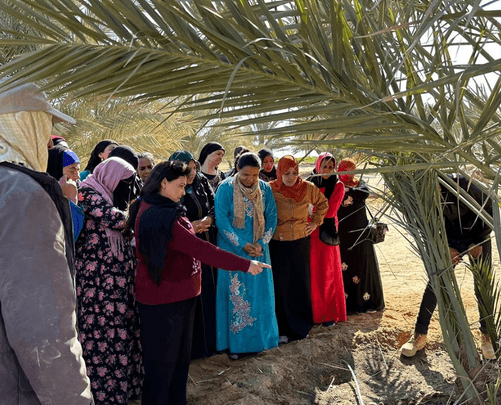Identifying Skills Requirements in Emerging Markets with Text Mining: A Case Study on Textile Sector in Egypt
A case-study to investigate the main features of the job profile needed in the Textile and Clothing (TC) sector in Egypt.
- August 26, 2022
- By Stefania Bait
Numerous strategies have been examined to promote sustainable industrial development, from labour reform to policies definition, from environmental regulation to sites development. All are key to creating new jobs, helping reduce poverty and improving standards of living. One of the focuses of these strategies is related to skills identification and forecasting, to support emerging countries to strengthen their skills supply. Regrettably, the COVID-19 pandemic has exacerbated the skills gap between developed and least developed countries, making skills shortages an alarming concern. New approaches and perspectives are needed to define the skills required by a specific sector, reduce the gap between skills demand and supply, and adapt education and training programs. In this article, a case-study to investigate the main features of the job profile needed in the Textile and Clothing (TC) sector in Egypt is presented.

Methodology
Some of the emerging tools are based on text mining, which is the semiautomatic process of extracting knowledge from text. This approach has been widely considered to capture emergent drivers and identify critical elements among a considerable amount of text. In particular, these techniques have been used effectively to identify skill requirements within specific industries and predict skill demand. For this purpose, the so-called Semantic Brand Score (SBS) has been used. This is a rather innovative text mining metric proposed by Andrea Fronzetti Colladon in 2018, which aims at assessing the importance of a brand in large groups of textual documents.
The overall approach followed in the presented case study is summarized in Figure (1) below:

Job descriptions have been scraped from two main job platforms, which are Wuzzuf and Naukrigulf, in relation to Textile and Clothing sector and the Readymade garment sector. Specifically, data have been gathered from June to September 2021.
Results
The presented case study aims at identifying skills and job profiles required by the textile sector in Egypt, demonstrating that they are crucial for the private sector to guide investments in specific training and for local governments to sharpen educational reforms.
As it is possible to see in Figure (2) almost 70% of the job vacancies required less than three years of experience.

This information highlights the need to retrain the workforce according to market needs rather than upskilling processes. In particular, “Operations management, supply chain and logistics” and “Business development” are the categories that require the highest level of experience (7-8 years). In contrast, “quality” and “maintenance and production” required less than 2 years of experience.
The next Figure (3) shows a network in which the thickness of the arcs represents the frequency of association between categories. The greater the thickness of the arc, the greater the relationship between the categories within job profiles.

As it is possible to see in Figure 3, there are some categories with numerous associations – the higher the number of arcs the higher the connections- while there are some with weak and few connections. For instance, “human resource and education” category is only related with design and the connection is weak. This information is crucial to understand the level of investment that each category required to develop job profiles. Indeed, the more a category is connected with the other the wider the number of skills will be required and so the higher the effort that must be spent for trainings.
Afterwards, a set of skills have been defined and analyzed through the SBS. Results are reported in the following Figure (4).

Technical skills are the most relevant, followed by commercial, administrative, and business development skills. Contrary to expectations, digital skills are not mentioned among textile-related vacancies.
Finally, the analysis was again conducted by introducing so-called “green skills.” Surprisingly, green skills achieved a low BSS level, showing that they are not mentioned at all in the job offers considered (Figure 5).

To corroborate the results achieved, all green jobs were considered – from O*NET database- and matched with the occupational profile required by the textile sector in Egypt. Surprisingly enough, nearly 60 percent of the considered vacancies can be regarded as green jobs.
Conclusions
Text mining approaches have demonstrated to be vital to identifying general skills, characterizing market requirements and providing vital information to decision-makers in order to develop training and policies.
On the other hand, since the transition to a green economy cannot be achieved without a skilled labor force, also the so-called “green skills” need to be captured and developed. From the proposed approach, it seems clear that analyzing job vacancies through text mining to highlight which “green skills” are required is not an efficient approach. First, because, identifying a clear taxonomy of “green skills” whenever dealing with not direct “green job” – like renewable energy engineering- is not easy. An efficient approach could be to identify the most demanding and crucial challenges to support the energy transition in a specific area, define the most appropriate job profile to tackle with them, and finally define all the skills required to train those profiles. In addition, future development could be related to the integration of text mining approaches to multi-criteria decision-making tools to support decision-makers’ choices relying on input provided by these approaches.


